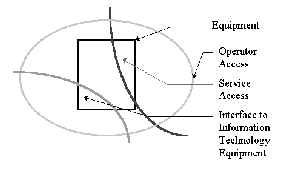 © Nutwood UK Ltd 2001 |
Eddystone Court - De Lank Lane St Breward - BODMIN - PL30 4NQ Tel: +44 (0)1208 851530 - Fax: +44 (0)1208 850871 nutwooduk@nutwood.eu.com |
|
|
|
Product Safety: Safety, Product Safety, Directives and StandardsBy Gregg Kervill |
Readers with specific requests for future subject should address them to "The Editor quoting GKCL02."
In the first article (GKCL01) we considered the relationships between product safety and quality. In this article we shall learn about some of the fundamental pitfalls that can trip and catch the unwary.
If we look closely we see that this answer is not as straightforward as we first thought. If we consider something like water - this can kill and damage property.
We can drown in water only a few inches deep and will certainly die if we are deprived of it for many days: anyone who has suffered a burst pipe or a tap that has been left running will know the damage that water can cause.
Similarly there are no restrictions on the purchase of batteries, yet we know that the materials that they contain can be hazardous if the batteries are opened, or swallowed.
These characteristics do not of themselves make the product unacceptable for use in our community provided their use is well know and accepted generally.
We take care of small children to ensure that they do not drown in the bath, burn themselves on cookers or fires and we accept that we will suffer injury if we grossly misuse certain products. The bottom line is - nothing can be absolutely safe.
The role of standards is to provide use with guidance to the design and use of products, and to ensure an acceptable level of safety.
At this point I think it is beneficial to summarise our considerations and expectations. Most of us feel that products should not cause injury or damage and accept that we have a degree of responsibility for their safe us. These wholly reasonable views would cause us no problem if they were universally accepted and could remain in our heads - but unfortunately neither of these two conditions are true.
Firstly not all manufacturers will agree about the level of protection that they should give to the 'user', some may provide higher 'Quality' (see GKCL01) at a correspondingly higher cost: whilst other may provide a lower 'Quality' solution.
The result could be that the same type of product presenting the consumer with different levels of risk depending upon the manufacturer. This is not an idea situation - least of all because the expectations set by the higher 'Quality' products may lull the user into a false sense of security when they used a similar product of another manufacture.
Any product outside the scope of the New Approach SAFETY directives falls, automatically, within the scope of the General Safety Directive. Thus:-
The directives, generally, include a phrase similar to ".products that comply with a relevant harmonised standard are deemed to comply with the Essential Requirements of this directive.".
What this means is that is our product complies with an appropriate harmonised standard we can place the CE Marking on the product.
The important words to note here is "deemed" and "appropriate". The following are some of the implications of which we need to be aware:
So in this way the harmonised standards can be compared to the Highway Code in that both give guidance but do not guarantee that we will not have an accident.
Demonstrating compliance, and producing a 'Data File' are within the capability of most competent engineers but are specialist tasks that require expert knowledge of the standards, their interpretation, the application of the product, and how compliance will be maintained during manufacture. We shall consider this task in future articles.
The choice of standard must be yours: but it is important to understand how the product functionality and interfaces affect the standards that may be appropriate.
Example:- I manufacture electrical test equipment and read the "SCOPE" of EN61010 and decide to use it.
Some of my products have RS 232 interfaces and connect to Personal Computers PC's): these products are covered by EN60950.
When I compare EN61010 and EN60950 I discover significant differences between them. In the case of electrical insulation of a safety barrier I discover that the (EN61010) "Creepage" and "Clearance" distances I have used between "Hazardous Voltage" and the "Operator Accessible" RS232 outputs do not comply with those of EN60950 (which requires a greater distance for my particular application).
In this situation we must consider the risk to which the operator is exposed. The operator of my test equipment is limited by an appropriate standard. The risk to which the PC operator is exposed is limited by EN60950: but my connecting my equipment to the PC I may be exposing the "Operator" to a higher degree of risk.
"Am I committing an offence?" "Could I be prosecuted?" - Frankly I do not know - that decision would be up to the Enforcement Authorities and the Courts - but if I was to be prosecuted I personally would feel more certain of victory if I was acting for the prosecution.

This mapping exercise will:
In the next article we shall review some of the physical and mechanical consideration of the design. This is because it is these items that will define the overall shape, size and construction of our new product.
Please note copyright reserved by GK Consultants Ltd.
Any comments to be made or references to this article please quote GKCL02.
Gregg Kervill may be contacted at GK Consultants Ltd. (GKCL)
Tel: 01703 767739
Fax: 01703 767789
E-Mail: sales@gkcl.com
Web: http://www.gkcl.com/
 © Nutwood UK Ltd 2001 |
Eddystone Court - De Lank Lane St Breward - BODMIN - PL30 4NQ Tel: +44 (0)1208 851530 - Fax: +44 (0)1208 850871 nutwooduk@nutwood.eu.com |
|
|
|